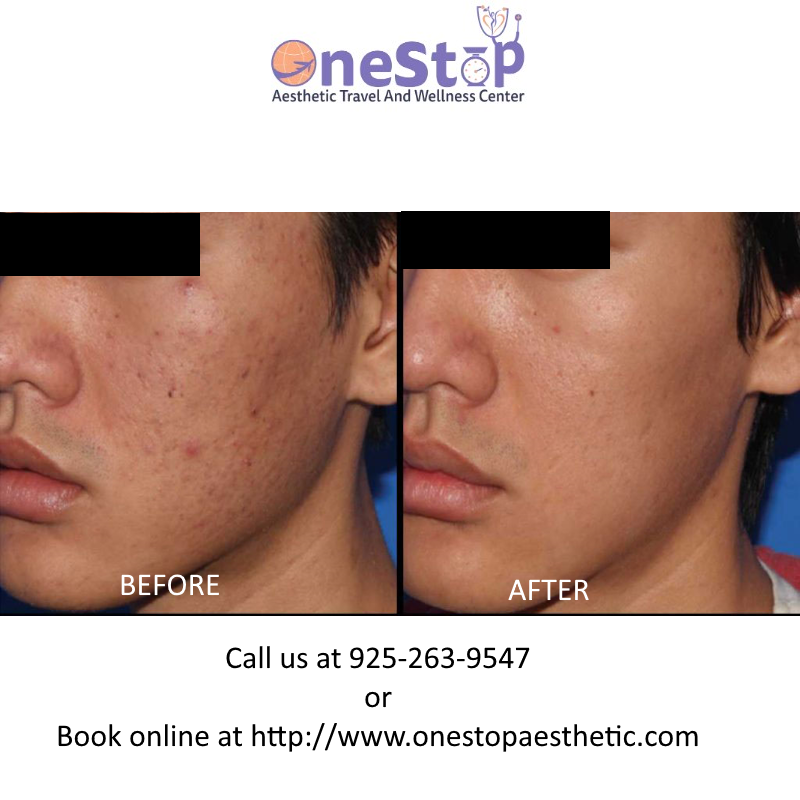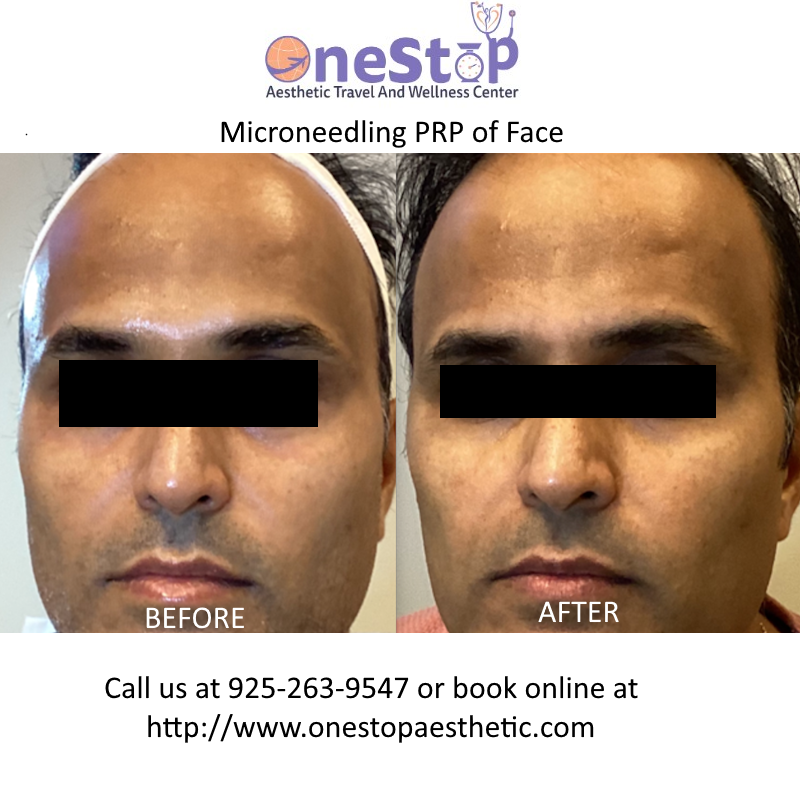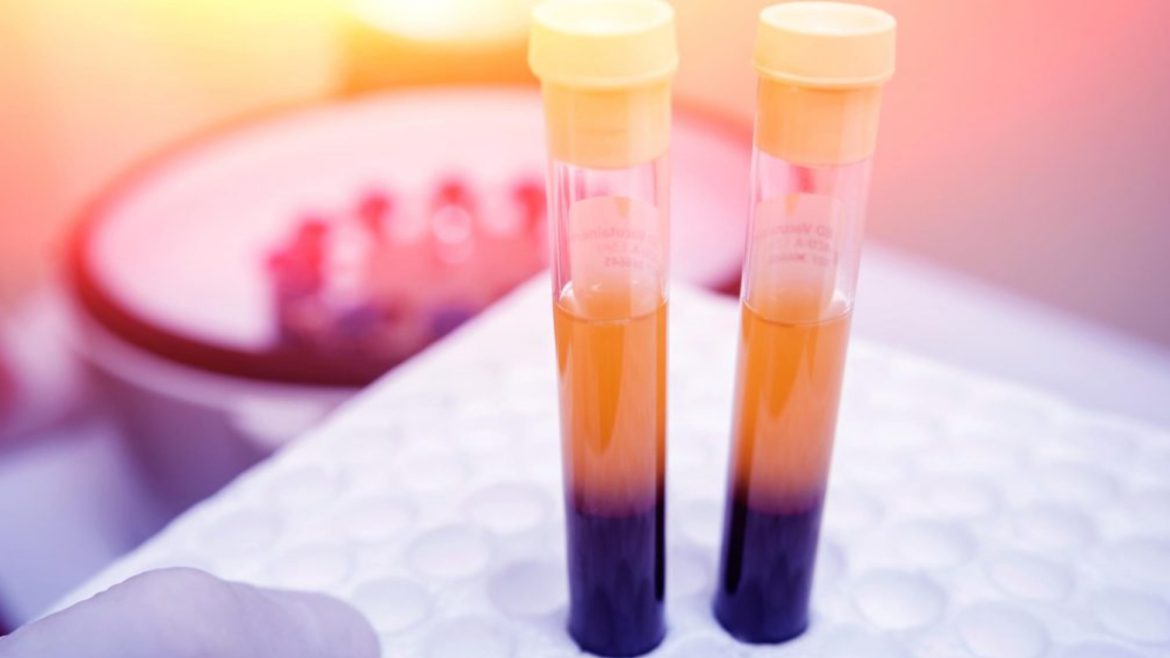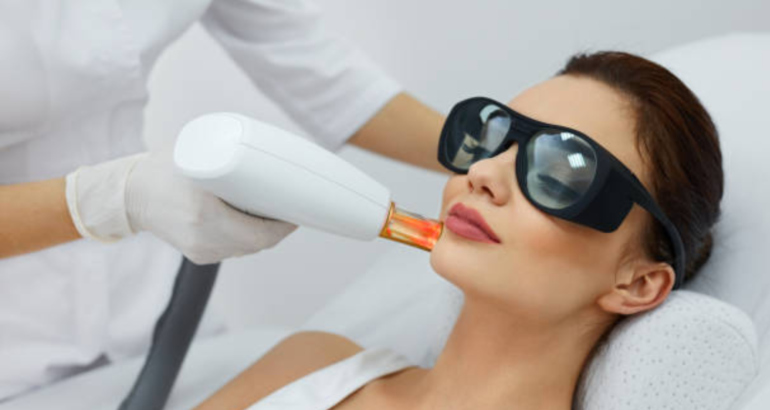Microneedling Platelet-Rich Plasma (PRP)
Microneedling PRP cosmetic procedure combines two techniques to rejuvenate the skin: Microneedling and PRP therapy. We use FDA-approved Rejuva pens for performing procedures. You can get more information on this page as well.
Microneedling
Microneedling is a dermatological procedure involving a pen device, like the FDA-approved RejuvaPen NXT, with tiny, fine needles. These needles create controlled micro-injuries on the skin’s surface, stimulating the body’s natural healing response. As the skin heals, collagen and elastin production is triggered, improving skin texture, reducing scars, and creating a youthful appearance. This procedure commonly addresses fine lines, wrinkles, scars, and hyperpigmentation concerns.
Platelet-Rich Plasma (PRP) Therapy
PRP therapy involves using the patient’s blood to isolate a concentrated solution of platelets and growth factors. These platelets are rich in proteins that promote tissue regeneration and wound healing. The process starts by drawing a small amount of the patient’s blood, then spinning in a centrifuge to separate the platelets from other blood components. The resulting PRP is then applied or injected back into the skin, further stimulating the body’s natural healing processes and enhancing collagen production. PRP contains several elements necessary for cell recruitment, multiplication, and specialization in the healing process.
Platelet Rich Fibrin Therapy
PRF therapy, or Platelet-Rich Fibrin therapy, is a regenerative treatment that utilizes the patient’s blood to promote tissue healing and rejuvenation. It is a more advanced form of platelet-rich plasma (PRP) therapy and has gained popularity in various medical and cosmetic fields.
The process of creating PRF for PRF therapy involves the following steps:
- Blood Collection: A small amount of the patient’s blood is drawn into a specially designed tube without anticoagulants.
- Centrifugation: The tube with the blood is placed in a centrifuge and spun at a specific speed and time to separate its components.
- Separation: Centrifugation results in three distinct layers: the top layer of acellular plasma, the middle layer of PRF (Platelet-Rich Fibrin), and the bottom layer of red blood cells.
- PRF Collection: The middle layer, which contains platelets, growth factors, white blood cells, and a fibrin matrix, is carefully collected. The fibrin matrix forms naturally during centrifugation and acts as a scaffold to hold the platelets and growth factors.
- Application: The PRF is used in various medical and cosmetic procedures, where it is applied topically or injected directly into the targeted treatment area.
Benefits of PRF Therapy
- Natural and Autologous: PRF therapy utilizes the patient’s own blood, making it an autologous treatment that minimizes the risk of allergic reactions or adverse effects.
- Gradual Release of Growth Factors: The fibrin matrix in PRF allows for a gradual and sustained release of growth factors over an extended period, potentially enhancing the regenerative effects.
- Tissue Healing and Regeneration: PRF therapy stimulates tissue healing and regeneration, making it valuable in wound healing, orthopedics, dentistry, and aesthetic treatments.
- Improved Bone Grafting: PRF has shown promise in enhancing the outcomes of bone grafting procedures by promoting bone regeneration and integration.
PRF therapy is used in various medical and cosmetic applications, including skin rejuvenation, wound healing, hair restoration, oral surgery, and orthopedic treatments. As with any medical procedure, PRF therapy should be performed by a qualified healthcare professional to ensure safety and efficacy.
2-Spin PRP Therapy or Two-step PRP Therapy
2-spin PRP therapy, also known as Two-Step PRP therapy, is an advanced technique for preparing Platelet-Rich Plasma (PRP) with a higher concentration of platelets and growth factors. It involves an additional centrifugation step compared to the traditional single-spin PRP method, resulting in a more concentrated and potent PRP product.
The process of creating PRP for 2-spin PRP therapy includes the following steps.
- Blood Collection: A small amount of the patient’s blood is drawn into a specialized blood collection tube containing an anticoagulant to prevent clotting.
- First Centrifugation: The blood is centrifuged at a specific speed and time to separate it into different layers based on density. This initial spin separates the blood into three layers: red blood cells at the bottom, platelet-poor plasma (PPP) in the middle, and platelet-rich plasma (PRP) at the top.
- PRP Collection: The middle layer, which contains platelet-rich plasma (PRP) with a concentration of platelets and growth factors, is carefully collected.
- Second Centrifugation: The collected PRP is then transferred to another tube and undergoes a second round of centrifugation.
- Separation and Concentration: During the second spin, the PRP is further separated into a platelet-poor plasma (PPP) layer and a more concentrated platelet-rich layer.
- Final PRP Product: The concentrated platelet-rich layer obtained after the second centrifugation is the final 2-spin PRP product used for treatment.
Benefits of 2-Spin PRP Therapy
- Higher Concentration: 2-spin PRP therapy yields a more concentrated PRP product than the traditional single-spin method, potentially providing more growth factors and regenerative potential.
- Enhanced Therapeutic Effects: The increased concentration of platelets and growth factors in 2-spin PRP may improve therapeutic outcomes in tissue healing and regeneration.
- Customizable: The 2-spin PRP method allows for customization of the PRP product based on the patient’s specific needs and the treatment area.
2-spin PRP therapy is commonly used in various medical and cosmetic applications, including facial rejuvenation, hair restoration, sports injuries, wound healing, and orthopedic treatments. As with any medical procedure, 2-spin PRP therapy should be performed by a qualified and experienced healthcare professional to ensure safe and effective results.
Microneedling with 2-step PRP Therapy
When microneedling is combined with PRP therapy, the two procedures synergize to amplify the effects. During the treatment, after the microneedling is performed to create the controlled micro-injuries, the PRP solution is applied topically to the treated area. The microchannels created by the microneedles allow for better absorption and penetration of the PRP into the deeper layers of the skin, maximizing its rejuvenating effects.
The combination can result in enhanced collagen production, improved skin texture and tone, reduced scars, and a youthful appearance. The treatment is commonly used for facial rejuvenation but can also be applied to other body areas.
In summary, the main difference between regular microneedling and combination treatment is the addition of PRP therapy, which utilizes the patient’s growth factors to enhance the procedure’s results.
What are the applications of Microneedling PRP (2-step)?
This procedure can be used to treat various body areas, but it is most commonly performed on the face. However, it can also be applied to other body parts to address specific concerns. The treatment areas include:
- Face: This procedure is widely used for facial rejuvenation. It can improve skin texture, reduce fine lines and wrinkles, tighten sagging skin, minimize pore size, and enhance overall skin tone and appearance. It can be used for skin resurfacing and acne scar therapy.
- Neck: The neck is another common area treated with this procedure to address signs of aging, such as wrinkles and sagging skin.
- Décolletage (Chest): This area often shows signs of aging, including sun damage and wrinkles. This procedure can help improve skin texture and tone in the décolletage area.
- Hands: Hands can also show signs of aging, like volume loss and thinning skin. This procedure can stimulate collagen production, making the skin on the hands appear more youthful and rejuvenated.
- Scars: This procedure can improve the appearance of certain types of scars, including acne scars, surgical scars, and stretch marks, by promoting collagen remodeling.
- Knee and Joint Injections: PRP injections can be used to treat joint pain like Arthritis and regeneration of knee cushion. We provide this treatment at our clinic. You can get more information on this page.
- Hair restoration – PRP 2-step with scalp injections: This procedure has been a very effective treatment for hair restoration
What is the advantage of Microneedling PRP (2-step) over traditional?
A combination treatment of Microneedling with PRP offers several advantages over the traditional method:
- Enhanced Results: In the combination treatment, the regenerative power of Platelet-Rich Plasma (PRP) with collagen-stimulating effects enhances the impact of the treatment. The growth factors in PRP boost the body’s natural healing response, improving skin texture, reducing scars, and creating a more youthful appearance than traditional alone.
- Accelerated Healing: The PRP, combined with treatment, helps accelerate the healing process, reducing downtime and allowing for quicker recovery. It can also minimize redness and swelling after the procedure.
- Personalized Treatment: Since PRP is derived from the patient’s blood, the risk of allergic reactions or adverse effects is minimal, making it a safe and personalized treatment option.
- Versatility: While traditional treatment alone is effective for various skin concerns, adding PRP expands the treatment’s capabilities, making it suitable for addressing a wider range of issues, including fine lines, wrinkles, and hyperpigmentation.
- Long-lasting Results: The collagen production stimulated by combination treatment can lead to longer-lasting results than traditional treatment alone, providing ongoing skin improvement.
Microneedling with PRP offers a more comprehensive and effective approach to skin rejuvenation, making it a preferred choice for individuals seeking optimal results and natural skin revitalization.
Does 2-step PRP contain PRF?
2-spin PRP indeed contains PRF (Platelet-Rich Fibrin). In the 2-spin PRP preparation method, the collected platelet-rich plasma (PRP) is transferred to a tube for a second round of centrifugation after the first centrifugation. During this second spin, the PRP is further separated into two layers: a platelet-poor plasma (PPP) layer and a more concentrated platelet-rich layer, the final PRP product used for treatment.
The concentrated platelet-rich layer obtained during the second spin in the 2-spin PRP method essentially contains platelet-rich fibrin (PRF). The fibrin matrix forms naturally during the second centrifugation, providing a scaffold for platelets and growth factors and enhancing the regenerative potential of the final PRP product.
So, 2-spin PRP and PRF contain a fibrin matrix, and the key distinction lies in the preparation process. 2-spin PRP is a specific method of PRP preparation that results in a higher concentration of platelets and growth factors, including PRF, due to the two rounds of centrifugation. Conversely, PRF typically refers to a single centrifugation method that yields platelet-rich fibrin without undergoing the additional concentration step of 2-spin PRP.
What method do you use for Microneedling PRP?
We use 2-step PRP for any PRP treatments at our clinic.
Is the procedure painful, and is there any downtime?
During the procedure, a topical numbing cream is typically applied to minimize discomfort, making the process more tolerable. Some patients may still experience mild discomfort during the treatment. As for downtime, there might be some redness and minor swelling after the procedure, but it usually subsides within a day or two. Most individuals can resume their regular activities within a few days.
What skin concerns can Microneedling PRP (2-step) address?
Microneedling with PRP addresses various skin concerns, including fine lines, wrinkles, acne scars, enlarged pores, uneven skin texture, sun damage, and hyperpigmentation. It also helps to improve overall skin tone and tightens sagging skin.
How many sessions of Microneedling PRP (2-step) are needed for optimal results?
The sessions required can vary depending on individual skin conditions and treatment goals. Generally, a series of 3 to 6 treatments, spaced about 4 to 6 weeks apart, is recommended for optimal results. Maintenance sessions may be advised to sustain the benefits over time.
Are there any side effects or risks associated with Microneedling with PRP (2-step)?
Microneedling with PRP is considered safe when performed by a qualified and experienced provider like Dr Anuja Garg. Microneedling with PRP is generally considered safe by a qualified and experienced healthcare provider. However, like any cosmetic procedure, there are potential side effects and risks. It’s essential to be aware of these before undergoing the treatment:
- Redness and Swelling: Mild redness and swelling are common after the procedure and usually subside within a few days. Using a cold compress and following post-care instructions can help minimize these effects.
- Skin Sensitivity: The treated skin may feel sensitive or tender for a few days following the procedure. Avoid using harsh or irritating skincare products during this time.
- Bruising: Some individuals may experience mild bruising at the treatment site, especially if blood-thinning medications or supplements were not avoided before the procedure.
- Infection: Although rare, there is a small risk of infection, especially if proper post-care instructions are not followed or if the treated area is exposed to contaminants.
- Hyperpigmentation or Hypopigmentation: Changes in skin pigmentation may occur, but they are usually temporary and resolve with time.
- Allergic Reactions: While allergic reactions are rare since PRP is derived from the patient’s own blood, there is still a slight possibility of an allergic response.
- Cold Sore Reactivation: If you have a history of cold sores or herpes simplex virus (HSV) infection, the procedure may trigger reactivation. Inform your provider beforehand to discuss preventive measures.
- Scarring: In rare cases, improper aftercare or infection may lead to scarring. Following post-care instructions diligently can help prevent this risk.
To minimize these risks, having a thorough consultation before the procedure is crucial. Inform your provider about any medical conditions, allergies, or medications you are taking. Follow both pre-care and post-care instructions carefully and promptly report any unusual or concerning symptoms to your provider. If you have any doubts or concerns about Microneedling with PRP, discuss them with your healthcare provider to determine if the treatment suits your needs and skin type.
How long does it take to see results?
Results from microneedling with PRP can be seen gradually as the skin’s natural healing and collagen production process takes time. Visible improvements usually become apparent within a few weeks after the initial treatment, with continued enhancement over several months.
Is Microneedling PRP (2-step) suitable for all skin types?
Microneedling with PRP is generally safe for all skin types. The risk of allergic or adverse reactions is minimal since the PRP solution is derived from the patient’s blood. However, it’s essential to have a consultation with a dermatologist or cosmetic specialist to assess individual skin conditions and determine the suitability of the treatment.
How can I prepare for the Microneedling PRP procedure?
Pre-care instructions for Microneedling with PRP are essential to ensure the best possible results and minimize the risk of complications. Here are some common pre-care instructions:
- Sun Protection: Avoid direct sun exposure and tanning beds for at least two weeks before the procedure. Sunburned or tanned skin can increase the risk of complications and reduce treatment effectiveness.
- Skincare Products: Avoid using retinoids, alpha hydroxy acids (AHAs), beta hydroxy acids (BHAs), and other harsh exfoliants for about a week before the treatment. These products can make the skin more sensitive and increase the risk of irritation during the procedure.
- Makeup: Arrive at the appointment with a clean, makeup-free face for proper disinfection before the procedure.
- Medications: Inform your provider about any medications or supplements you are taking, as some medications might need to be temporarily stopped or adjusted before the treatment.
- Hydration: Ensure your skin is well-hydrated leading up to the treatment. Drink plenty of water and use moisturizers regularly to keep the skin in good condition.
- Avoid Blood Thinners: Avoid blood-thinning medications or substances, such as aspirin, ibuprofen, or alcohol, for a few days before the procedure to minimize the risk of bleeding and bruising.
- Allergies and Medical Conditions: Inform your provider about any allergies or medical conditions you may have and any history of cold sores or other skin infections.
- Plan for Downtime: While downtime is typically minimal with Microneedling with PRP, it’s still advisable to plan for a few days of recovery, especially if you have any social or professional engagements.
It’s essential to follow these pre-care instructions diligently to optimize the results of Microneedling with PRP and ensure a safe and successful procedure. Dr Anuja Garg will provide specific pre-care guidelines tailored to your individual needs and skin type. If you have any questions or concerns, don’t hesitate to contact your provider before the scheduled appointment.
What are the post-care instructions?
Post-care instructions for Microneedling with PRP are crucial for proper healing and maximizing the treatment’s benefits. Here are some common post-care instructions:
- Avoid Sun Exposure: Protect your skin from direct sun exposure for at least a week after the procedure. If you must be outdoors, wear a wide-brimmed hat and use a broad-spectrum sunscreen with a high SPF.
- Gentle Cleansing: Use a gentle cleanser to wash your face for the first few days following the procedure. Avoid scrubbing or rubbing the treated area to prevent irritation. We recommend using a gentle cleanser from ZO. You can find more details here.
- Avoid Makeup: Refrain from applying makeup or using any skincare products, except those recommended by your provider, for the first 24 to 48 hours.
- Moisturize: Keep your skin well-hydrated with a gentle, non-comedogenic moisturizer to support the healing process.
- Avoid Irritating Products: Avoid using retinoids, alpha hydroxy acids (AHAs), beta hydroxy acids (BHAs), and other harsh or exfoliating products for at least a week post-treatment.
- No Picking or Peeling: Allow any flaking or peeling of the skin to occur naturally. Picking at the treated area can lead to scarring or infection.
- Avoid Heat: Avoid saunas, hot tubs, and hot showers for the first few days after the procedure, as heat can exacerbate redness and swelling.
- Protect from Contaminants: Avoid swimming in pools or any activity that might expose the treated area to bacteria or contaminants for at least 48 hours post-treatment.
- Stay Hydrated: Drink plenty of water to keep your skin hydrated and aid healing.
- Patience with Results: Results from Microneedling with PRP may take some time to develop fully. Be patient and follow your provider’s recommended treatment plan for optimal outcomes.
- Follow-up Appointments: Attend any scheduled follow-up appointments with your provider to monitor your progress and address concerns.
It’s essential to adhere to these post-care instructions to promote proper healing and minimize the risk of complications. If you experience any unusual or concerning side effects after the procedure, such as severe redness, swelling, or signs of infection, contact your provider promptly for guidance and evaluation.
Is there any post-treatment care I should follow?
After the procedure, keeping the treated area clean and following the provider’s post-treatment instructions is important. Avoid direct sun exposure and use a gentle, hydrating skincare regimen as the skin heals. Applying a high-SPF sunscreen is crucial to protect the skin during recovery.
Before and after photos of some of the Microneedlng PRP treatments



 Where can I find all other Medical Spa treatments offered by your clinic?
Where can I find all other Medical Spa treatments offered by your clinic?
You can find all Medical Spa services on this page.
Where can I see all the service prices and book an appointment online?
This page lets you get the price list and book an appointment online.



 Where can I find all other Medical Spa treatments offered by your clinic?
Where can I find all other Medical Spa treatments offered by your clinic?
